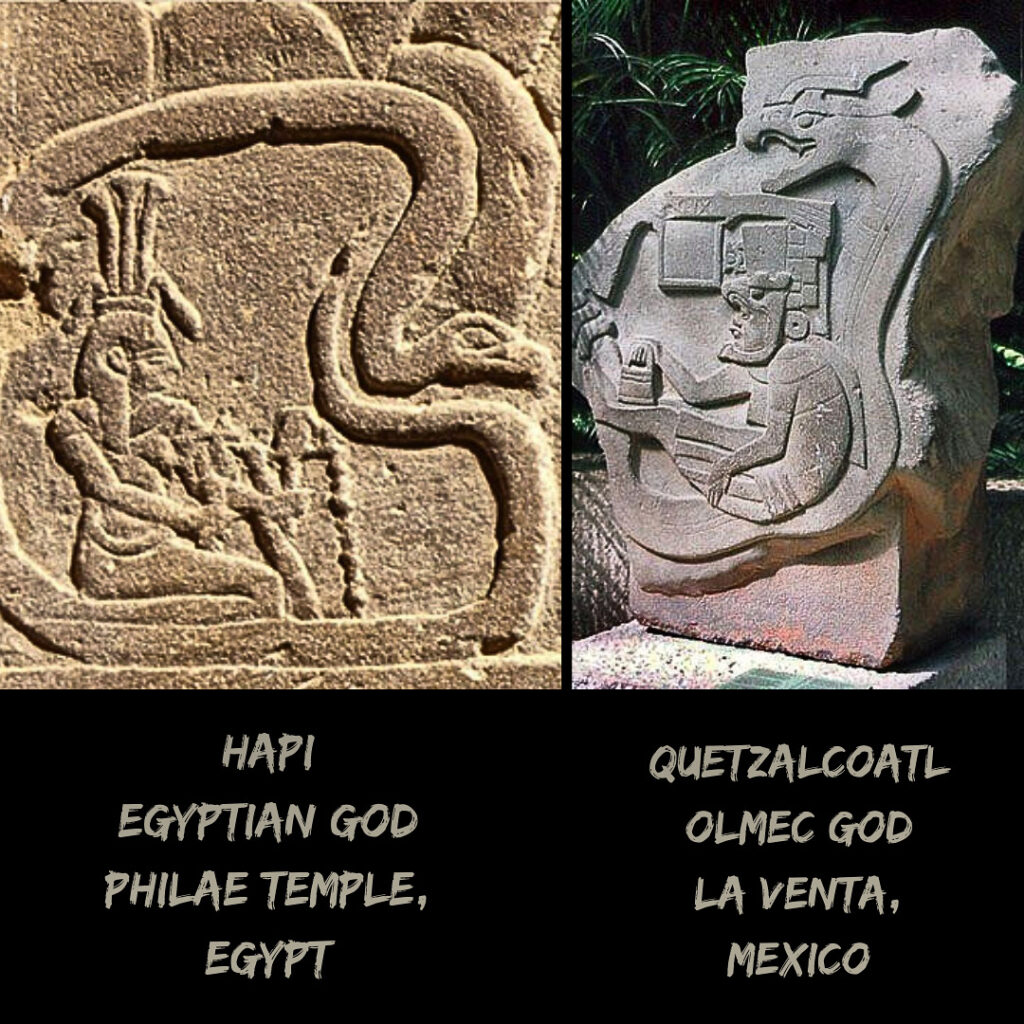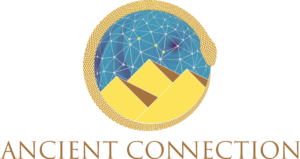THE OLMEC – EGYPTIAN CONNECTION

Unraveling the Mysteries of Ancient Gods and Cultures: Egypt and the Olmecs
What could two of the oldest civilizations on two different continents have in common?
Well… quite a lot, apparently.
From traditions and beliefs to writing and construction, pre-Dynastic Egypt shares numerous similarities with the Olmec culture.
Fascinating Parallels in Ancient Artifacts and Gods
Interestingly, the older the artifacts and structures, the more they resemble each other. For instance, let’s examine some of the earliest depictions of the gods Hapi and Quetzalcoatl. Both are shown sitting inside a “bird-snake,” as if traveling, and each holds an object in their hands. Strangely enough, Quetzalcoatl is holding an exact replica of the infamous bag held by the Sumerian gods, the Anunnaki.
Shared Characteristics of Ancient Gods
These visual similarities are just the beginning. Both Hapi and Quetzalcoatl share the same characteristics: they are gods of waters and fertility, and both represent the connection between earth and sky. These shared traits are remarkable, given that they were created by two ancient cultures with—supposedly—no direct contact.
The Enigma of the Olmecs and Egyptians
While we know a lot about the Egyptian civilization, our knowledge of the Olmecs is more limited. Based on historical and archaeological findings, the Olmecs seemed to emerge suddenly as the first organized civilization in South America. They left behind pyramids, megalithic structures, traditions, and religious beliefs, only to disappear as quickly as they appeared, passing their legacy to later cultures like the Inca and Maya, including the worship of Quetzalcoatl.
Pyramids, Writing, and Common Beliefs
The real mystery, however, lies in the similarities between the Olmecs and ancient Egypt. Both cultures were pyramid builders and invented hieroglyphic writing systems. They depicted themselves and their rulers wearing elaborate headdresses and often with elongated heads. Additionally, both believed in cycles of creation and destruction, with gods inhabiting the Earth during the first cycle.
Theories of Common Origins
These striking similarities have led some researchers to speculate that the Olmecs may have originated from Africa and settled in South America long before Columbus. Others propose that the Egyptians and Olmecs were survivors of the Younger Dryas catastrophe, sharing common ground before the disaster struck the Earth.
Could these two ancient cultures have a common origin? The question remains a captivating mystery, intriguing researchers and historians alike.
An interesting take is the one discussed by Plato in his Critias – you can read it here : the ancient Egyptian priests believed that they descended from the people that inhabited the continent of Atlantis. As the continent was sinking during the natural catastrophe, he says, the survivors fled to the East and to the West. Those who fled to the East eventually ended up settling in Egypt… but what about those who fled to the West? Could this be the reason why these two cultures share so many similarities?
